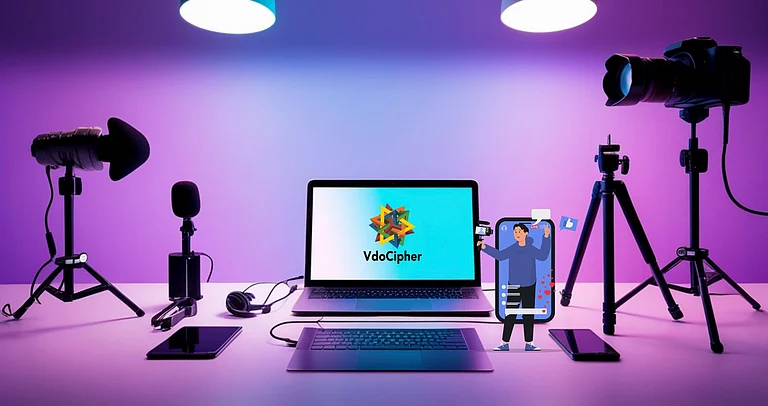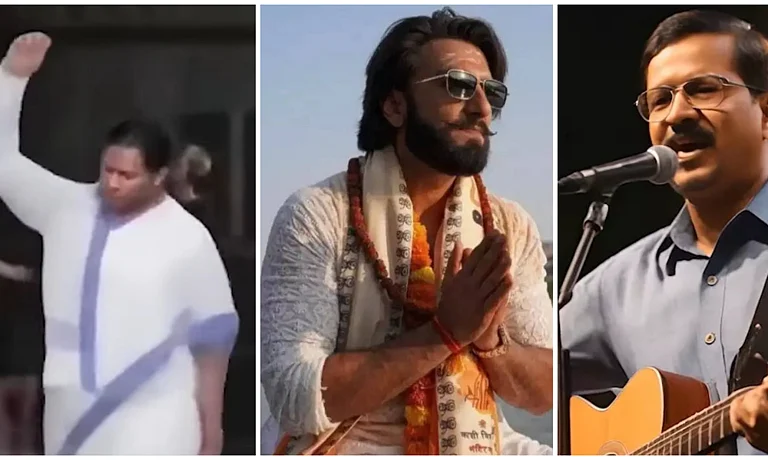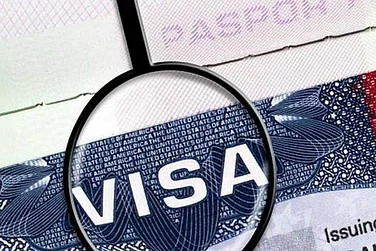A deepfake of the late Y.S. Rajasekhara Reddy endorsing his son, the current Andhra Pradesh Chief Minister Jagan Mohan Reddy stating, “After my death, as a continuation to my dreams … despite the many troubles he was made to go through, Jagan met with the people of Andhra Pradesh,” went viral on Whatsapp in the ongoing Indian national elections. The video was made by The Indian Deepfaker, an account being employed by politicians to use generative-AI amid campaigning. Although it was never posted online officially, it was shared widely by users.
The clip is just another classic example wherein iconic dead politicians are being resurrected using AI for campaigning. As nearly a billion Indians go to polls, political parties are investing significant sums on AI-generated content. Deepfakes of actors like Aamir Khan and Ranveer Singh criticizing Modi, personalized AI-generated phone calls from local and national leaders to lakhs of voters, and use of deepfake memes to target opposition Congress leaders Rahul and Sonia Gandhi have amassed millions of views online.
AI made its entrance in the Indian elections in 2020 when a video of Delhi BJP leader Manoj Tiwari was also dubbed in English and Haryanvi - languages he isn’t fluent in. The video gained widespread traction among voters, gaining credence as it being the leader actually speaking in multiple languages. However, over the next few years, although such political content using generative tools did make its way in elections, it wasn’t at the scale as it is in the ongoing polls. Deep fakes were largely restricted to nonconsensual porn, majorly targeting women, but emerging and accessible technology is changing that trend.
The technology is primarily being used in two ways in the elections: voter outreach and satire. While earlier political parties would recycle older videos and edit clips, the landscape is changing from using generative-AI to create memes to using it to make satire that spreads misleading claims. From “Melodi” memes or politicians dancing, trends are pivoting to simulated parody reels and audio to spread claims such as the opposition bloc INDIA alliance leaders will favor Muslims. Although users might be able to decipher something as a parody or humor, research shows such rhetoric helps set narratives or form opinions on leadership.
Many political leaders are also investing in tech that creates phone calls that simulate an authentic conversation, or their speeches cloned in a diverse set of regional languages. Such material can easily be perceived to be authentic by voters. Infact, Rest of World reported how Indian parties may be spending up to $50 million on AI-generated content this year, with companies that create it claiming to reject requests that may seem unethical or spread misinformation.
Both official pages of political parties and proxy pages are inundating social media platforms with content created through the use of cheap and easy-to-use generative AI tools. These tools don’t require any programming skills, and need very little resources, and can therefore be used by anyone with access to the internet.
Such content is usually emotive, for instance, a deepfake video of world leaders saying Jai Shree Ram following the inauguration of Ayodhya’s Ram mandir. Or a video of Congress leader and former Madhya Pradesh Chief Minister Kamal Nath, claiming he promised a mosque and the reinstatement of Article 370 to Muslims in a meeting.
While Nath’s videos were more easily debunked based on the sheer amount of record and reporting available of their activity and statements online, smaller or more local candidates can be highly impacted.
In fact, content created using these tools is not only disseminated on social media platforms but also on messaging platforms such as Whatsapp which has over 500 million active Indian users. Since it's encrypted, it only gets trickier to gauge the extent of dissemination, what type of content is being shared, and assess the validity of the claims being made in them. Additionally, when they’re forwarded via messaging apps, their reduced quality makes it even harder to detect or notice nuances that lower grade generative-AI tools tend to create - mismatch between audio and video, unnatural sounding voice, or inaccuracies in a video.
A McAfee study in India found about 22 percent of participants admitted to encountering a political deepfake that they initially believed was authentic.As a result, the biggest challenge for fact-checkers and researchers over the years has become to be able to reach the same users that have consumed a false claim with credible and authentic information sourced from the right places. Once there’s a first hit, and the claim has gained virality, the impact of a debunk does not make a similar impact.
Alternately, political leaders are now employing tactics of plausible deniability when criticized for making wrongful statements by alleging it's a deepfake. Recently, senior BJP leaders claimed a video of its MP Dinesh Lal Yadav blaming population growth for unemployment is a deepfake. But Logically Facts found Yadav had made that statement in an interview.
Currently, AI models have been trained in largely westernized data sets hampering the level of sophistication when it comes to creation of Indian deepfakes. Therefore, a large chunk of simulated content being created isn’t intended to spread fake news and mostly evidently satirical. However, the boom in use of such tools will only enable better content from penetrating Indian audiences that may not possess the required literacy tools to discern fact from fiction.
But are Indian authorities and the legislature keeping up with the immense pace of its growth? Although Modi did recently acknowledge the threat of deepfakes, under existing laws a victim can file a case under the Indian Penal Code. However, experts say the legislation is reactive not anticipatory. While the Election Commission of India recently issued an advisory asking political parties and its representatives to not use deepfakes and misinformation, posts by surrogate pages and individuals are harder to monitor.
Polling in other South Asian countries has also been marred by use of generative AI tools. Multiple videos of Pakistan Tehreek-e Insaaf (PTI) leaders including that of former Prime Minister Imran Khan stating they are boycotting polls were circulated. In Bangladesh, reports said cheap AI tools were fueling polarization during elections, and a deepfake video of a candidate saying she was withdrawing from elections was also circulated online.
Perhaps a combination of digital literacy skills for users, more cohesive protocol formulated by all stakeholders, and making platforms accountable to watermark and moderate AI-generated could help tackle emerging threats.
(Ilma Hasan is a senior editor at Logically Facts where she covers mis/disinformation with a focus on politics, tech policy, AI, and its impact. Logically Facts is an IFCN-certified independent editorial and fact-checking subsidiary of Logically.)






















